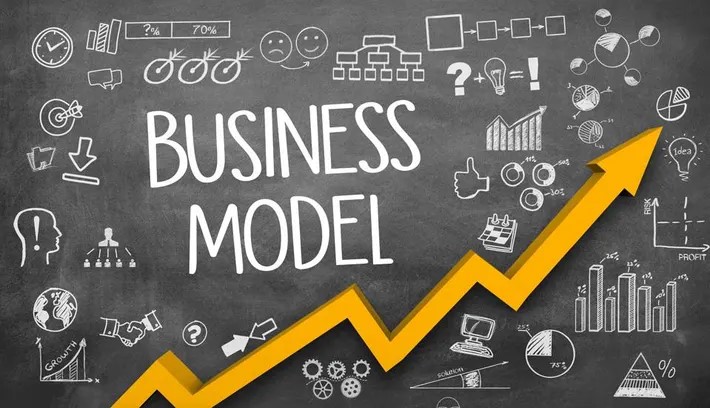The choice of an appropriate business model is more than a mere operational decision. It’s a strategic imperative that dictates the trajectory of a company’s growth and success. Business models define how a company creates, delivers, and captures value. This makes them crucial for anyone looking to establish a sustainable business. Understanding and choosing the right business models are fundamental to ensuring that a company can navigate market complexities. It also influences its ability to adapt to consumer demands and continuously innovate.
Exploring Various Business Models
The selection of a business model influences every aspect of a company’s operations. This includes its go-to-market strategy and customer engagement to its revenue generation methods. Let’s delve deeper into some of the most prevalent and successful business models in today’s economy.
Subscription Model
The subscription model has transformed traditional one-time payment structures by allowing companies to generate steady revenue streams through periodic subscriptions. This model is favored by businesses ranging from media streaming services like Netflix to software providers such as Adobe, offering customers ongoing value while ensuring predictable revenue for the company.
Freemium Model
Popular among digital businesses, the freemium model provides users with basic services at no cost while charging for advanced features or functionalities. This approach, seen in companies like Spotify and Dropbox, helps businesses scale quickly by building a large base of users and then converting a portion of them to paid plans.
E-commerce and Marketplace Models
E-commerce allows businesses to sell goods directly to consumers online, bypassing traditional retail channels and reducing overhead costs. Amazon is a quintessential example of this model. Alternatively, marketplace models facilitate transactions between buyers and sellers on a platform, taking a fee from each sale, as seen with eBay and Etsy. Both models leverage the internet’s reach and efficiency to cater to a global customer base.
On-Demand Model
The on-demand model meets immediate customer needs via digital platforms that connect them with service providers. This model is exemplified by companies like Uber and Airbnb, which have revolutionized transportation and lodging industries, respectively, by providing real-time services facilitated by technology.
The Impact of Business Models on Strategic Success
The right business model can significantly impact a company’s ability to grow and compete in its market. It shapes how a company interacts with customers, how it earns revenue, and how it scales operations.
Meeting Customer Expectations
A business model that aligns with current market trends and consumer expectations is more likely to succeed. For example, in today’s fast-paced world, models that offer immediacy and flexibility, like on-demand services, are particularly popular among consumers.
Scalability and Adaptability
Choosing a business model that can scale and adapt with the growing market demands is vital. Digital models, such as those used by e-commerce and tech platforms, often offer the flexibility needed to expand to new markets and adjust offerings without substantial incremental costs.
Revenue Stability and Growth
Certain models, particularly subscriptions and long-term contracts, provide stable and predictable revenue streams, which are invaluable for long-term planning and investment. These models can help smooth out cash flows and reduce the volatility associated with one-off sales or seasonal fluctuations.
Choosing the Right Business Model
Selecting the most appropriate business model involves a deep understanding of your market, your customers, and your long-term business objectives. Here are some critical considerations to guide this decision.
Comprehensive Market Analysis
Effective market research can uncover vital information about potential customers, competitors, and overall market dynamics. This research helps in choosing a business model that not only meets current market needs but also anticipates future trends and changes.
Resource Evaluation
Understanding the resources available, including capital, talent, and technological assets, is crucial when selecting a business model. For instance, some models might require significant upfront investment in technology or infrastructure, while others might be more reliant on human capital.
Alignment with Business Vision
The chosen business model should support the company’s broader strategic goals. Whether it’s rapid scaling, diversification, or long-term sustainability, the model should facilitate these objectives without compromising the company’s core values and mission.
Success Stories from Diverse Business Models
Many companies have thrived by selecting business models that perfectly align with their strategic goals. For instance, Salesforce revolutionized the software industry by adopting a cloud-based subscription model, which allowed it to scale rapidly without the need for physical products or a traditional sales force. Similarly, Warby Parker disrupted the eyewear industry by combining e-commerce with a direct-to-consumer approach, cutting out intermediaries and passing savings to customers.
Conclusion: The Foundation of Business Strategy
In conclusion, business models are not just frameworks for operational management but are foundational to strategic planning and competitive differentiation. They influence how companies are perceived in the market, how they grow, and how they are structured internally. For startups and established businesses alike, selecting the right business model is a crucial decision that requires careful consideration of the market environment, consumer behavior, and internal capabilities. By effectively aligning their business model with strategic objectives, companies can ensure not just survival but also long-term success and innovation in an ever-changing global marketplace.


